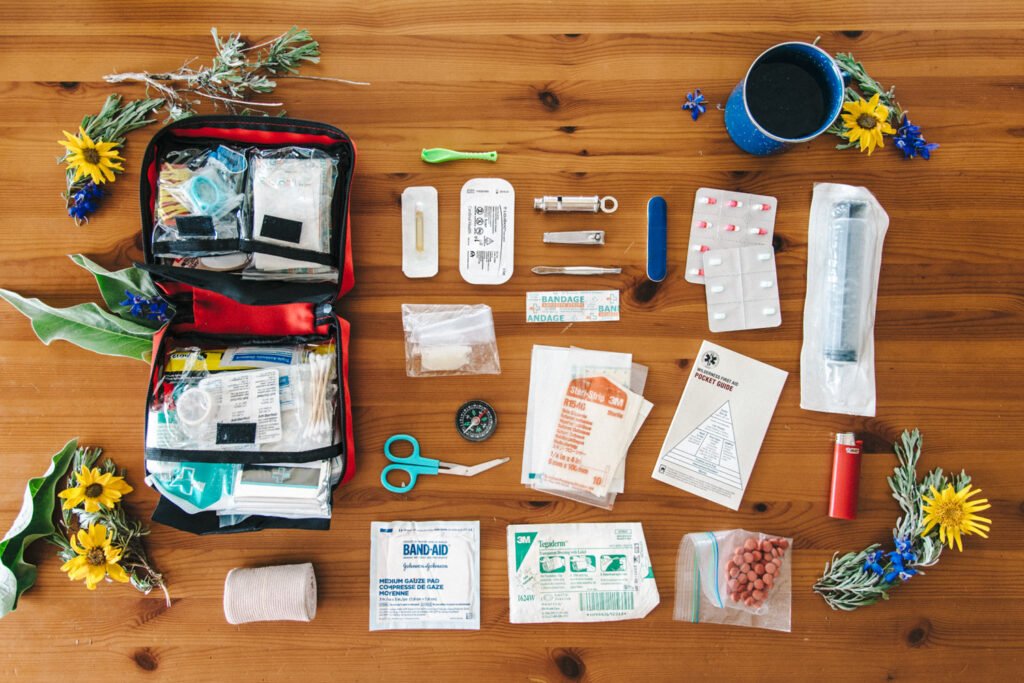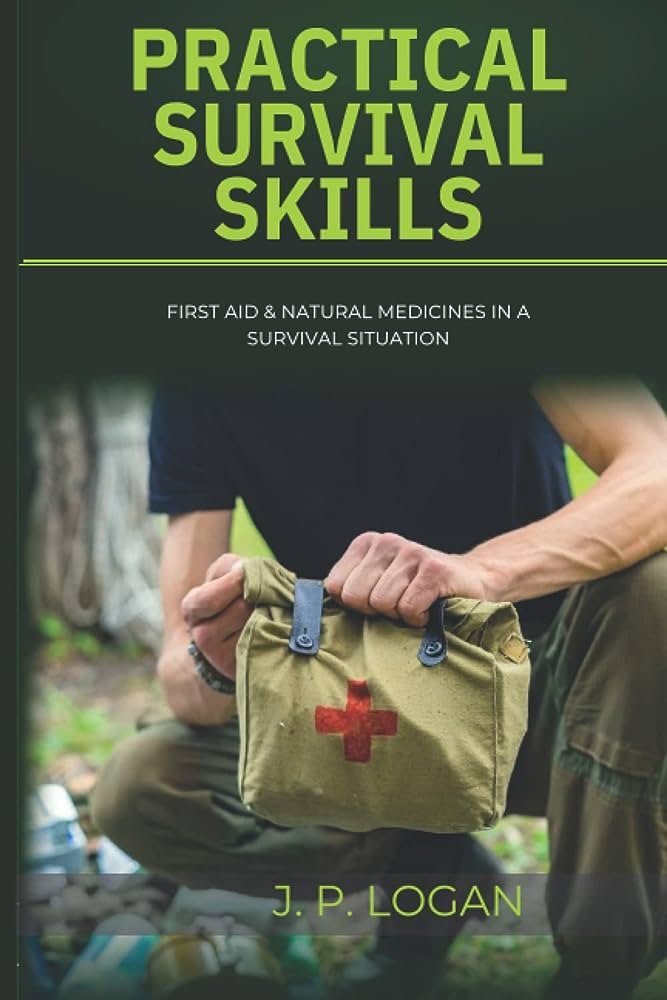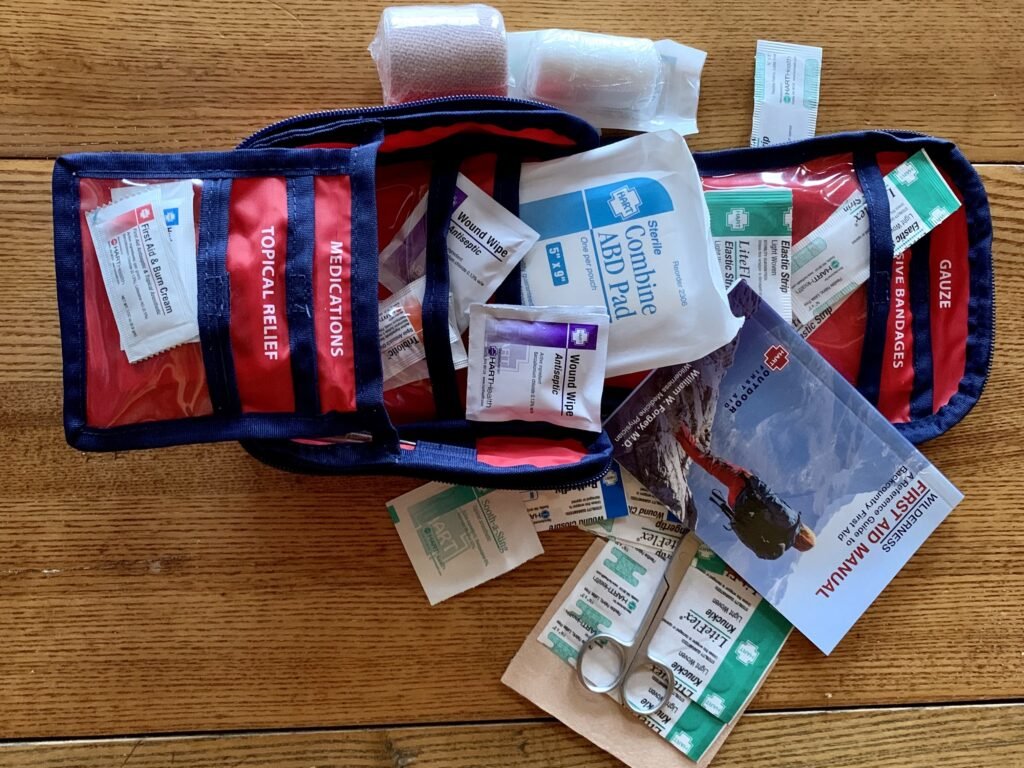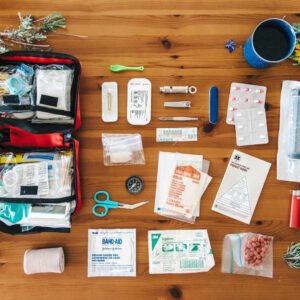In the article “Essential First Aid and Medical Skills for Survival,” you will discover a comprehensive guide to equipping yourself with the necessary knowledge and tools to handle emergency situations. From understanding the importance of first aid in survival scenarios to learning essential medical skills, this article will empower you to be prepared and confident in the face of unpredictable circumstances. You’ll also gain insights into popular brands like 5.11 Tactical, Blackhawk, Gerber Gear, and many more, ensuring you have the right gear to accompany your newly acquired skills. Embark on this informative journey and equip yourself with the knowledge that could save lives.
Essential First Aid and Medical Skills for Survival
In a survival situation, it is crucial to have a comprehensive understanding of first aid and medical skills. Whether you are in the wilderness, facing a medical emergency, or dealing with environmental health issues, knowing how to assess the situation and provide proper care can mean the difference between life and death. This article will guide you through the essential first aid and medical skills needed in survival scenarios, covering everything from basic life support to improvised medical techniques.
Assessing the Situation
Surveying the Environment
Before providing any medical assistance, it is important to assess the surrounding environment for potential hazards that could jeopardize your safety. Look out for dangerous terrain, unstable structures, or any other factors that could cause harm to you or the victim. Ensure you are in a safe location before proceeding with any medical interventions.
Identifying Hazards
Once you have ensured your safety, it is crucial to identify and address any hazards that may pose a threat to the victim. This includes removing the patient from hazardous areas, such as burning buildings or dangerous bodies of water, to prevent further harm. By identifying and managing hazards promptly, you can create a safer environment for providing medical assistance.
Evaluating the Victim’s Condition
Assessing the victim’s condition is a critical step in determining the appropriate course of action. Check for responsiveness by calling out to the person and gently shaking their shoulders. If there is no response, check for breathing and a pulse. If the victim is not breathing or does not have a pulse, immediate intervention is necessary. If they are conscious, evaluate their level of consciousness, obtain a medical history if possible, and assess the severity of their injuries or illness.
Basic Life Support
Performing CPR
Cardiopulmonary resuscitation (CPR) is a vital life-saving technique used to revive individuals in cardiac arrest. Start by placing the heel of your hand on the center of the victim’s chest, interlocking your fingers. Perform chest compressions by pushing hard and fast at a rate of 100-120 compressions per minute. Alternate between chest compressions and rescue breaths until medical help arrives or the victim shows signs of life.
AED (Automated External Defibrillator) Use
AEDs are portable devices that deliver an electric shock to the heart in cases of cardiac arrest. When using an AED, follow the instructions provided by the device. Start by turning on the AED and attaching the electrodes to the victim’s bare chest. The machine will analyze the heart rhythm and provide prompts for delivering a shock if necessary. Ensure everyone is clear of the victim before delivering a shock, and continue CPR immediately after.
Managing Choking
Choking is a potentially life-threatening situation that requires immediate action. If someone is experiencing severe choking, stand behind them and perform the Heimlich maneuver. Place your hands slightly above the navel and deliver firm upward thrusts until the obstruction is dislodged. If the person becomes unconscious, perform CPR starting with chest compressions.
Administering Rescue Breathing
Rescue breathing is necessary when someone is not breathing but still has a pulse. Tilt the victim’s head back, lift the chin, and pinch their nose shut. Take a deep breath and create a seal over their mouth with yours, then give two slow breaths while watching for chest rise. Continue rescue breaths every 5-6 seconds until the person starts breathing on their own or medical help arrives.
Controlling Severe Bleeding
Severe bleeding can lead to life-threatening complications. Start by applying direct pressure to the wound with a clean cloth or sterile dressing, if available. If the bleeding does not stop, apply additional pressure using your hand or a tourniquet as a last resort. Elevate the injured body part if possible and continue to apply pressure until medical professionals take over.

Wound Care and Trauma Management
Cleaning and Disinfecting Wounds
Proper wound cleaning is crucial to prevent infections. Start by washing your hands thoroughly with soap and water or using hand sanitizer. Gently clean the wound with sterile saline solution or clean water, removing any debris or foreign objects. Apply an antiseptic solution, such as iodine or hydrogen peroxide, to prevent infection before dressing the wound.
Proper Dressing and Bandaging Techniques
Dressing and bandaging wounds help protect them from dirt, germs, and further injury. Choose appropriate sterile dressings based on the size and location of the wound. Place the dressing directly over the wound and secure it in place with adhesive tape or a bandage. Make sure the bandage is snug but not too tight to maintain proper circulation.
Treating Burns
Burns can occur in various situations and require immediate attention. Start by removing the source of the burn and cooling the affected area with cool running water for at least 10 minutes. Do not use ice or icy water, as it can further damage the skin. Cover the burn with a sterile non-stick dressing and seek medical help for severe burns.
Managing Fractures and Sprains
Fractures and sprains can be immobilized to minimize further injury and promote healing. For suspected fractures, immobilize the injured area with a splint or improvised materials such as sticks or rolled-up magazines. Use proper techniques to secure the splint in place without causing additional pain. Elevate the injured area if possible and seek medical attention.
Identifying and Treating Shock
Shock is a life-threatening condition caused by inadequate blood flow to the body’s organs. It can occur after severe injury or illness. Signs of shock include pale or clammy skin, rapid breathing, weak pulse, and altered mental state. To treat shock, lay the person down flat, raise their legs about 12 inches, and cover them with a blanket or jacket to keep them warm. Seek medical help immediately.
Medical Emergencies
Recognizing Heart Attacks
Heart attacks require immediate medical attention. Common symptoms include chest pain or discomfort, shortness of breath, nausea, and discomfort in the arms, back, neck, or jaw. If you or someone else experiences these symptoms, call emergency services immediately. Help the person assume a comfortable position and provide reassurance while waiting for assistance.
Responding to Strokes
Strokes are medical emergencies that require prompt action. Remember the acronym FAST to recognize stroke symptoms: Facial drooping, Arm weakness, Speech difficulties, and Time to call emergency services. If someone is experiencing stroke symptoms, call for help and keep them calm and comfortable until medical professionals arrive.
Dealing with Allergic Reactions
Allergic reactions can range from mild to severe, with severe cases potentially leading to anaphylaxis. If someone is having a severe allergic reaction, call emergency services immediately. If the person has an epinephrine auto-injector, help them use it following the instructions. Monitor their breathing and remain with them until medical help arrives.
Addressing Diabetic Emergencies
Diabetic emergencies can occur when blood sugar levels become too high (hyperglycemia) or too low (hypoglycemia). For a person experiencing hypoglycemia, provide them with a source of sugar like fruit juice or candy and encourage them to eat. In cases of hyperglycemia, encourage the person to check their blood sugar levels and seek medical advice.
Managing Asthma Attacks
Asthma attacks can be triggered by various factors and require immediate attention. Help the person sit upright and provide reassurance. If they have a prescribed inhaler, assist them in using it. Encourage slow, deep breaths, and call for emergency assistance if the symptoms worsen or if the person does not have an inhaler.

Environmental Health Issues
Preventing and Treating Heat Exhaustion and Heatstroke
Heat exhaustion and heatstroke are serious heat-related conditions that can be prevented with proper precautions. Stay hydrated by drinking plenty of fluids and avoid prolonged exposure to heat. If someone shows signs of heat exhaustion, move them to a cool place, have them rest, and provide fluids. Heatstroke is a medical emergency; call for immediate medical assistance.
Recognizing and Managing Hypothermia
Hypothermia occurs when the body loses heat faster than it can produce, leading to dangerously low body temperature. Recognize signs of hypothermia such as shivering, confusion, and loss of coordination. Move the person to a warm environment, remove wet clothing, and cover them with warm blankets. Seek medical help promptly.
Identifying and Treating Frostbite
Frostbite can occur when exposed skin is exposed to freezing temperatures. Identify frostbite by the appearance of pale, cold, and numb skin. Move the person to a warm area and immerse the affected area in warm water. Avoid rubbing the area, as it can cause further damage. Apply sterile dressings and seek medical attention.
Addressing Dehydration and Waterborne Illnesses
Dehydration can occur in any environment, and it is crucial to prevent and manage it. Ensure you have access to clean drinking water and stay hydrated by drinking regularly. If someone shows signs of severe dehydration, such as dizziness or confusion, seek medical help. Additionally, be cautious of waterborne illnesses by treating water or using reliable water filters.
Controlling Insect Bites and Stings
Insect bites and stings can cause discomfort and potential allergic reactions. Protect yourself by wearing appropriate clothing and applying insect repellent. If someone is stung, remove the stinger if visible and apply a cold compress or ice pack to reduce swelling. Monitor the person for signs of an allergic reaction and seek medical help if necessary.
Wilderness First Aid
Understanding Unique Challenges in a Wilderness Setting
Providing first aid in a wilderness setting presents unique challenges due to limited resources and remote locations. It is essential to be prepared and knowledgeable about the specific risks and dangers associated with the wilderness environment.
Providing Care in Remote Locations
In remote locations, response times can be significantly longer, making it crucial to have the necessary skills and supplies to provide immediate care. Carry a comprehensive first aid kit, including items such as bandages, splints, pain medication, and navigation tools.
Handling Splints and Improvised Stretchers
In the wilderness, improvisation may be necessary for splinting fractures or creating stretchers. Utilize available materials such as sticks, ropes, or clothing to stabilize fractures. Practice proper techniques to ensure the victim remains secure and immobilized during transportation.
Managing Snake or Animal Bites
Encounters with snakes or other animals can lead to dangerous bites. If bitten, keep the victim calm and restrict movement to prevent the spread of venom. Clean the wound with soap and water if available, and immobilize the affected area. Seek medical help immediately, as anti-venom may be necessary.
Recognizing and Treating Altitude Sickness
Altitude sickness can occur at high elevations and can be life-threatening. Recognize symptoms such as headache, nausea, dizziness, and shortness of breath. Descend to a lower altitude if possible and provide the affected individual with oxygen, if available. Monitor their condition closely and seek medical assistance if symptoms worsen.

Improvised Medical Techniques
Making Tourniquets
Tourniquets can be used to control severe bleeding in emergency situations. Take a wide, non-elastic material such as a belt or bandage and wrap it tightly around the limb above the wound. Secure the tourniquet in place and monitor the victim’s condition closely.
Creating Pressure Bandages
In the absence of proper medical supplies, pressure bandages can help control bleeding. Apply direct pressure to the wound using a clean cloth or dressing. After applying pressure, secure the dressing in place using a tight bandage or improvised material.
Constructing Slings and Splints
Slings and splints are important for immobilizing injured limbs and minimizing further damage. Use a triangular bandage or clothing to create a makeshift sling, supporting the injured arm or shoulder. When creating a splint, use sturdy materials such as sticks or rolled-up magazines to stabilize the injured area.
Utilizing Natural Remedies
In certain situations, natural remedies can be used to alleviate symptoms or promote healing. For example, aloe vera gel may provide relief for minor burns, while honey has antibacterial properties that can aid in wound healing. However, it is important to exercise caution and seek professional medical help when available.
Performing Basic Suturing
In emergency situations where professional medical help is not readily available, basic suturing techniques can be used to close wounds. Use sterilized suturing materials and practice proper wound cleaning and preparation before suturing. Seek medical assistance as soon as possible to prevent complications.
Recognizing and Managing Mental Health Emergencies
Identifying Signs of Emotional Distress
In survival scenarios, it is essential to address not only physical but also mental health emergencies. Look out for signs of emotional distress, such as extreme anxiety, sadness, or withdrawal from social interactions. Offer support and encouragement, and be attentive to the individual’s emotional needs.
Managing Anxiety and Panic Attacks
Anxiety and panic attacks can be overwhelming and require a calm and supportive approach. Help the person find a quiet and comfortable space, and encourage slow breathing exercises. Provide reassurance and stay with them until the symptoms subside.
Supporting Individuals with Suicidal Thoughts
Suicidal thoughts demand immediate attention and professional help. If someone expresses suicidal thoughts, take them seriously and listen without judgment. Encourage them to seek professional help or contact a helpline. Never leave a person in immediate danger and involve appropriate authorities when necessary.
Addressing Post-Traumatic Stress Disorder (PTSD)
Survival situations can result in post-traumatic stress disorder (PTSD), which requires specialized care. Support individuals with PTSD by being patient, understanding, and encouraging them to seek professional help. Create a safe and stable environment that fosters trust and open communication.
Providing Psychological First Aid
Psychological first aid involves providing emotional support and reassurance to individuals in distress. Listen actively, validate their feelings, and offer comfort and encouragement. Be respectful of their boundaries and obtain professional help when necessary.

Emergency Communication and Evacuation
Establishing Effective Communication in Disasters
During emergencies, communication is vital for coordinating rescue efforts and seeking help. Have reliable communication devices on hand, such as radios or cell phones. Establish a communication plan with your group and designate a meeting point in case of separation.
Using Signal Devices and Radios
Signal devices can be used to attract attention when in distress. Whistles, signal mirrors, or brightly colored clothing can help rescuers locate you. Additionally, handheld or two-way radios can be valuable tools for communication, especially in remote or wilderness settings.
Navigating in the Wilderness
Navigational skills are crucial for survival in the wilderness. Carry a compass or GPS device and be familiar with map reading and orienteering. Orient yourself by identifying prominent landmarks and maintaining a sense of direction.
Creating Emergency Shelter
In certain situations, creating an emergency shelter may be necessary for your safety and protection from the elements. Utilize available materials such as branches, leaves, or tarps to construct a shelter that provides warmth and shelter from wind and rain.
Preparing for Evacuation
In the event of a disaster or imminent danger, evacuation might be necessary. Have a plan in place that includes essential supplies, such as food, water, clothing, and first aid kits. Follow evacuation procedures and stay informed through local authorities or emergency broadcasts.
Personal Safety and Protective Measures
Using Protective Gear and Equipment
Protective gear and equipment can minimize the risk of injury or illness. Consider investing in high-quality gear from reputable brands such as 5.11 Tactical, Blackhawk, Gerber Gear, Leatherman, Benchmade, SOG Specialty Knives & Tools, Columbia Sportswear, The North Face, Patagonia, Arc’teryx, MSR (Mountain Safety Research), Therm-a-Rest, Petzl, Garmin, Suunto, CamelBak, Osprey, Deuter, Marmot, and Katadyn. Use items such as helmets, goggles, gloves, and sturdy footwear appropriate for the environment.
Identifying and Avoiding Dangerous Situations
Take proactive measures to identify and avoid dangerous situations. Be aware of your surroundings, stay updated on weather and environmental conditions, and avoid areas with known hazards. Trust your instincts and prioritize your safety.
Practicing Safe Techniques
Practicing safe techniques is crucial in preventing accidents or worsening injuries. Learn proper lifting techniques to avoid strain or back injuries, use tools and equipment with caution and follow safety guidelines, and always prioritize your safety and the safety of others.
Maintaining Hygiene and Sanitation Standards
Maintaining hygiene and sanitation standards is essential to prevent the spread of infections in survival situations. Wash your hands regularly with soap and water when available, or use hand sanitizer. Dispose of waste properly and ensure a clean environment to minimize health risks.
Applying Self-Care in High-Stress Environments
Survival situations can be highly stressful, and self-care is crucial for maintaining mental and physical well-being. Prioritize rest, hydration, and proper nutrition. Engage in activities that promote relaxation and stress relief, such as meditation or deep breathing exercises.
By acquiring these essential first aid and medical skills, you will be better equipped to handle various survival scenarios. Remember, proper preparation and knowledge are key to effectively assessing and responding to medical emergencies. Stay calm, act confidently, and prioritize the well-being of yourself and others in any survival situation.

